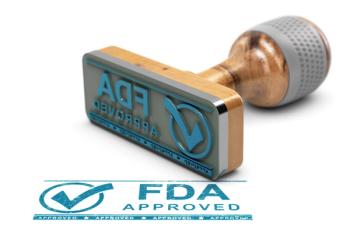Pharmacy Times: What role do pharmacists play in ensuring medication adherence and addressing barriers in long-term CIDP management?
Key Takeaways
- Early and ongoing patient education is crucial for treatment adherence.
- Pharmacists play a key role in troubleshooting insurance and scheduling challenges.
- The recent approval of efgartigimod alfa offers a new treatment mechanism for CIDP patients.
Amy Duong, PharmD, BCACP: Pharmacists are instrumental in promoting adherence, and one way that I address this is by focusing on early and ongoing patient education when I meet with my patients. Helping patients understand how these therapies work mechanistically and also reviewing when they should expect some kind of improvement and when they should expect some kind of full efficacy based on the clinical trial data. In terms of steroid tapers, I do review those schedules in depth to make sure that they fully understand when they're supposed to be decreasing their dose. We do discuss short-term and long-term [adverse] effects. And I do review and make sure everything is safe. Depending on their steroid dosage and duration, we may recommend prophylactic therapies for bone protection or gastrointestinal prophylaxis, for example. And during that time, we also talk about the risks of abrupt discontinuation with our steroid tapers as well. From a logistical side, I do help with the coordination of infusion scheduling, so making sure they're scheduled appropriately. If for some reason they're not scheduled or their appointment was canceled, we dig a little bit deeper into that. Is it because there is an issue with coordinating a ride or getting transportation? Or was it an insurance problem? And if it is an insurance problem, I assist with troubleshooting insurance delays to make sure that we don't have a lapse in treatment, especially when it comes to reauthorization for these patients' insurance plans.
Pharmacy Times: Can you speak to any emerging therapies for CIDP and how pharmacists can stay informed and involved in their implementation?
Duong: Great question. One exciting development within the past year in CIDP treatment was the approval of efgartigimod alfa and hyaluronidase-qvfc in July 2024. This offers a new mechanism of action targeting the neonatal Fc receptor pathway. More recently, in April of 2025, the prefilled syringe formulation was approved for efgartigimod alfa and hyaluronidase-qvfc. Before, it was approved for a weekly subcutaneous infusion that had to be administered by a health care professional, generally at the patient's home or at the provider's office. But now, with the prefilled syringe, patients can now self-administer without the burden of having to have all these scheduled infusion appointments or having to coordinate having a nurse or health care professional go to their home for the weekly administration. In terms of pipeline therapies, there is ongoing research for anti-CD20 antibodies, other FcRn receptor antagonists, and even complement inhibitors. Hopefully, we see more news come to light in the future. I do encourage pharmacists to stay informed by attending professional meetings and regularly checking trusted resources, including organizations like the GBS/CIDP Foundation, which often shares relevant updates on research and clinical trials. When these new therapies are introduced, I work very closely with our clinical-end pharmacy team to assess which patients may benefit from these new treatments, provide counseling and education to both the staff and the patients, and assist with the operational steps when it comes to new treatments. That can include electronic medical record integration, getting those order sets built out, and then navigation of prior authorization to ensure timely and effective rollout for those patients who are pursuing these new therapies.



















































































































































































































